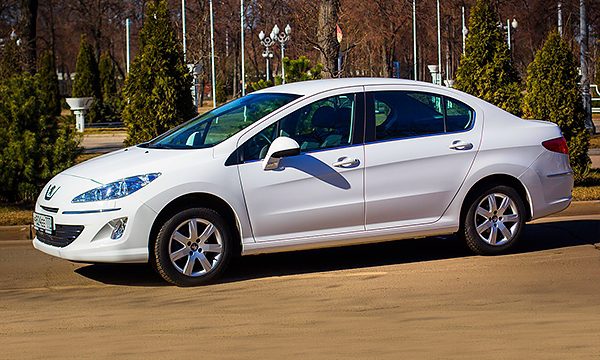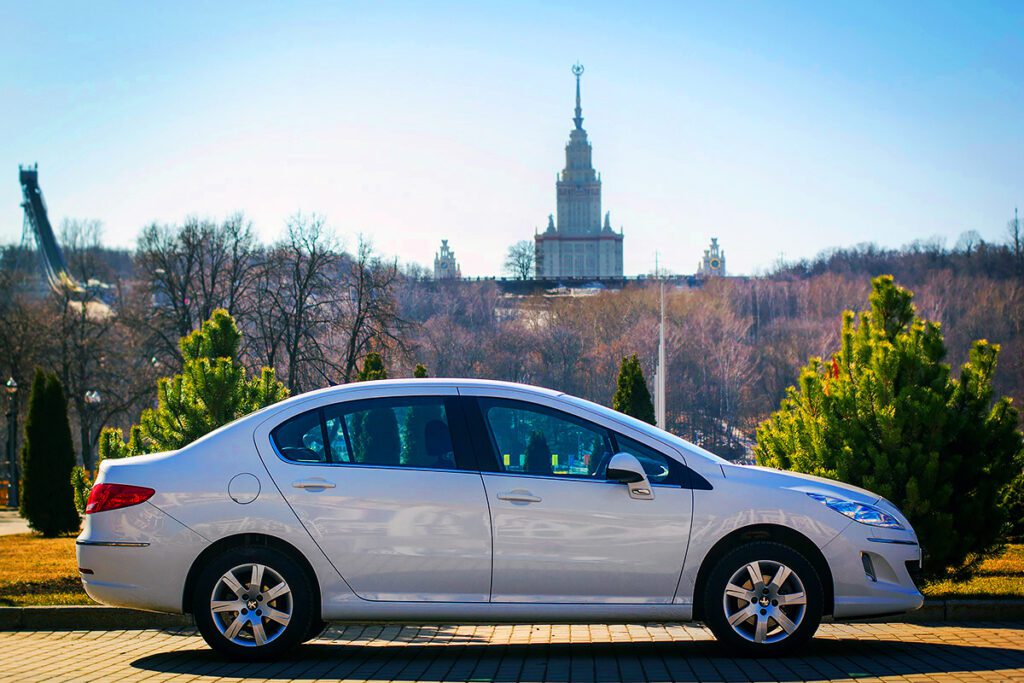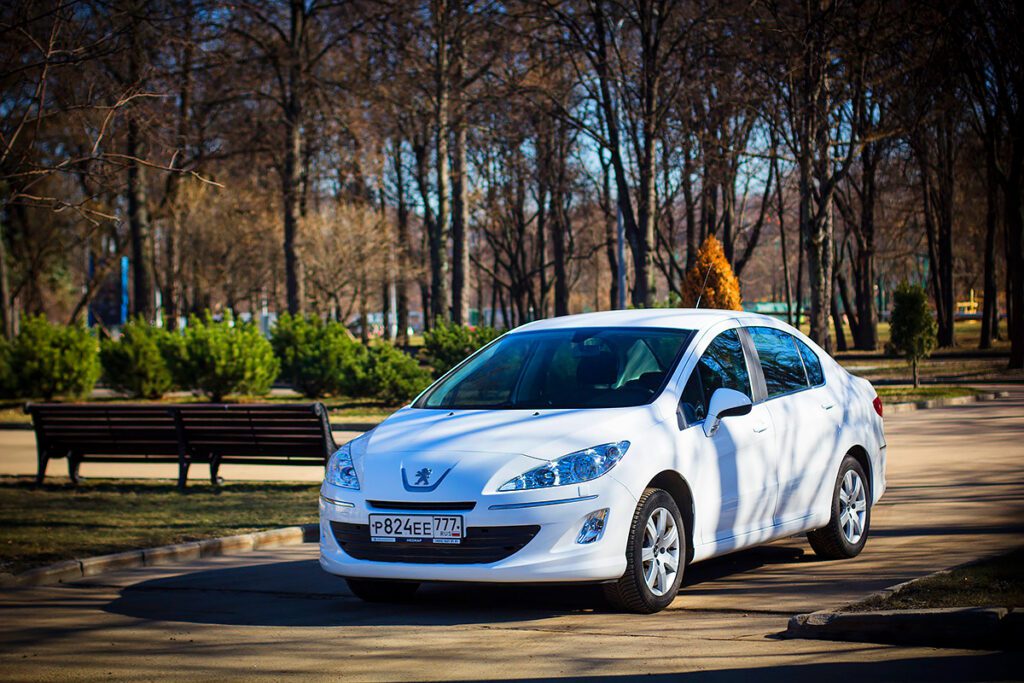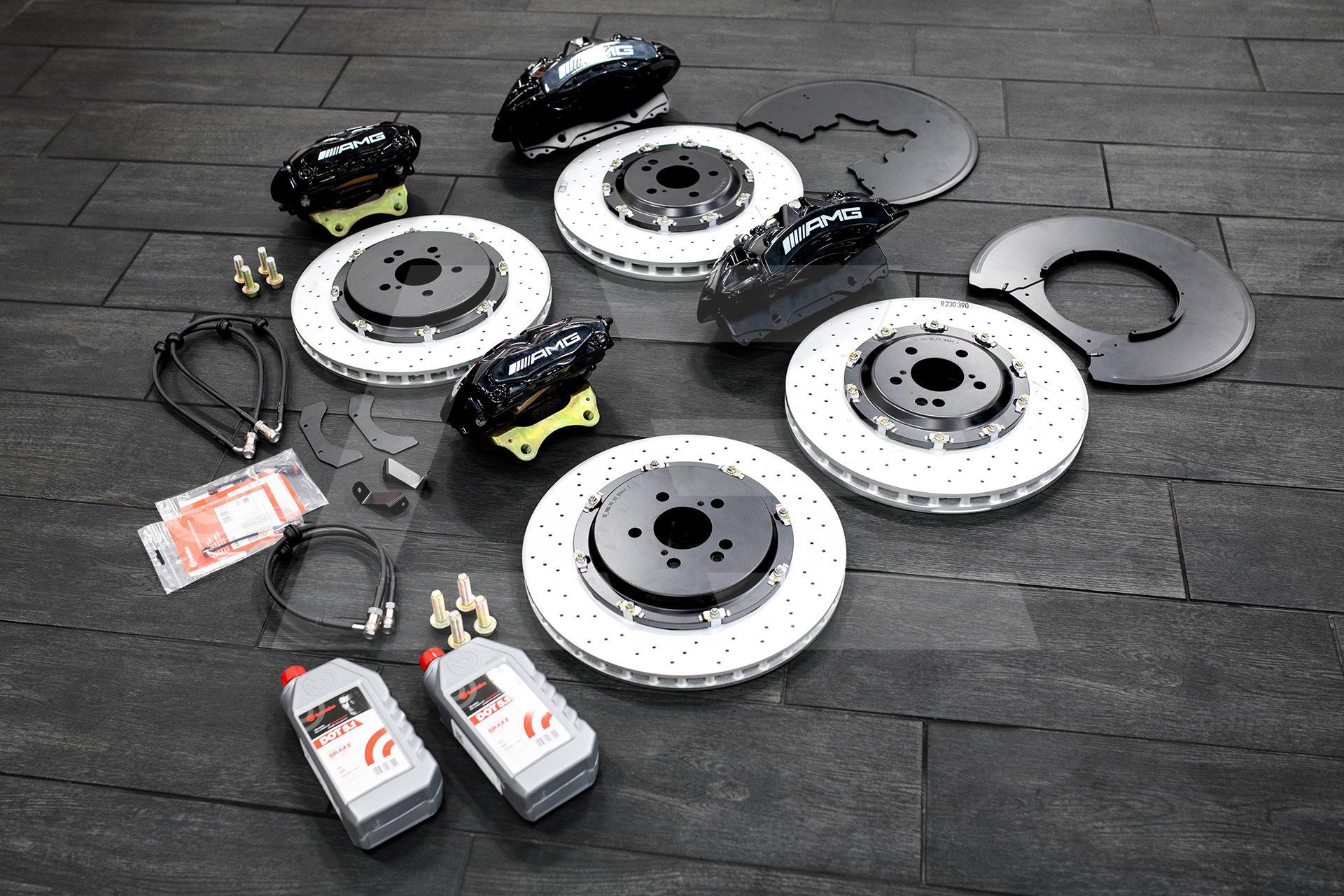
Test drive Peugeot 408
The French know as well as others how to make an inexpensive sedan out of a hatchback. The main thing is that the appearance does not suffer ...
In 1998, the French did a simple trick: a trunk was attached to the Peugeot 206 budget hatchback, which was not popular in some markets. It turned out a disproportionate sedan at an attractive price. A few years later, another hatchback suffered exactly the same fate, but already a C-class - Peugeot 308. At some point, they stopped buying the model in Russia, and the French decided to turn the hatchback into a sedan: 308 was created on the basis of 408 with a minimum of design changes.
The car did not receive much popularity, and then there was a crisis, due to which the 408 rose significantly in price. Now, in medium and high trim levels, the "Frenchman" is on a par with the more recent Nissan Sentra and the technologically advanced Volkswagen Jetta. But the 408 has a diesel version, which is distinguished by fantastic efficiency indicators. Autonews.ru staff members were divided about the French sedan.

I got the new 408 on "mechanics", thanks to which I have already earned several additional points in my personal rating. Moreover, the motor is very high-torque here. In third gear, if you wish, you can both get under way and drive at a speed of 10 to 70 kilometers per hour. The pleasure of fast driving on this Peugeot, however, is absolutely not felt. And this car was not created for high speeds. As the ad says, the 408 is "a big sedan for a big country." And there is really a lot of space inside: rear passengers, even tall, do not rest their heads on the ceiling, and we will build in the second row - not a problem at all.
Before driving a Peugeot 408 for a few days, I felt worse about this car. Now I am ready to recommend it to people who are looking for a car for about this money. But with two caveats: the car is suitable for those who are ready to drive around the city on "mechanics", and for those who consider the appearance of the sedan attractive.
Peugeot 408 formally belongs to class C, but in terms of dimensions it is comparable to some models of the higher segment D. The Frenchman, although built on the same platform as the 308, received a significantly stretched wheelbase - an increase in comparison with the hatchback was more than 11 centimeters. These changes affected, above all, the legroom of the rear passengers. The body length also turned out to be a record for the C segment. The trunk of the sedan is one of the largest in the class - 560 liters.
From a technical point of view, the suspension on the 408 is almost the same as the hatchback. There is a MacPherson-type construction in the front, and a semi-independent beam at the back. The main difference is in the different springs on the sedan. They received an additional coil, and the shock absorbers became stiffer. Thanks to this, the car's ground clearance increased: for the hatchback it is 160 mm, and for the sedan - 175 mm.
On the highway, 408 is extremely economical. If the on-board computer shows an average consumption of 5 liters per "hundred", then you are at least overspeed. In the urban rhythm, the normal figure is 7 liters. In general, you can call in for a gas station every three weeks.
Another thing is that the sedan, created on the basis of the previous 308 hatch, looks awkward. The pretty front end is in complete disharmony with the heavy stern, and in profile the car seems too elongated and not quite proportional. Even in the low-quality photos taken from the Strelka-ST camera, the Peugeot 408 is somehow outdated. However, the awkward appearance is the main problem of the Kaluga-assembled sedan. It is well equipped, is on par with competitors and is very roomy. And with a 1,6 HDI engine, this is generally one of the most economical cars on the Russian market. But such versions are bought very rarely: diesel and Russia, alas, are still in different coordinate systems.
The basic modification of the sedan is equipped with a 115 hp gasoline engine. and mechanical transmission. "Automatic" works in tandem with either a 120-horsepower naturally aspirated engine, or with a 150-horsepower turbocharged unit. The test vehicle was powered by a 1,6-liter HDI turbo diesel engine. A sedan with this power unit can only be ordered in a version with a five-speed manual gearbox. The motor develops 112 hp. and 254 Nm of torque.
The heavy fuel engine has a modest appetite. Average fuel consumption on the highway is declared at 4,3 liters per 100 km, and in the city Peugeot 408 with 1,6 HDI burns, according to the technical characteristics, only 6,2 liters. At the same time, the fuel tank of the sedan is one of the largest in the class - 60 liters. During a long test drive, the car was operated, including in low temperatures. During the entire winter period, there were no problems with the cold start.

Diesel Peugeot is not removed from the driver, like some refined ladies' hatchback. On the contrary, he keeps him in good shape, forcing him to work and rewarding him for this work with vigorous, sometimes even explosive craving. But you get tired of the constant struggle with iron in urban conditions. In addition, there is visibility - like in a trench: massive front pillars can hide a whole car, the dimensions from the driver's seat cannot be seen from the front or rear, and there are no parking sensors even in the rich version.
The sedan is hastily molded and frankly ugly, and the stern seems too heavy. The photographer has to work hard to find the right angle. I will tell you: you need to look in the salon, where the sedan, as if in revenge, turns out to be functional and comfortable. This is also French, mixed with a dozen absurdities like completely blind rotors for heated seats (they, unlike my Citroen C5, are at least visible here), strange modes of operation of the windshield wiper and an illogically arranged radio tape recorder. But the rest is soft, interesting and sometimes even charming.
The spaces at the back are a wagon and a small cart, the trunk is huge, and before the eyes of the driver and passengers there is a wide field of the front panel with a windshield extended far forward. I even want to lay out some documents or magazines on it. After this aquarium, the interior of the new Volkswagen Jetta, no less spacious in terms of numbers, seemed cramped, and all because the windshield of the German sedan is stuck into the panel, it seems, right before your eyes. So the bayonet is still well done, although not in everything.
The test specimen was made in the top-end Allure configuration. The car was equipped with full power accessories, heated mirrors, separate climate control, 4 airbags, 16-inch alloy wheels, fog lights and a multimedia system with Bluetooth. After the February rise in price, such a sedan cost, until recently, $ 13, although in August last year, a similar car cost $ 100. Last week, Peugeot announced a price cut for the lineup. Including, the 10 has fallen in price - now such a complete set costs buyers $ 200.
Versions with the initial 1,6 petrol engine now cost a minimum of $9. For this amount, the French offer a sedan with an Access configuration with 000 airbags, steel wheels, heated mirrors, radio preparation and a full-size spare wheel. Air conditioning costs $2, seat heating costs $400, and $100 for a CD player.
The most expensive Peugeot 408 is sold with a petrol 150-horsepower unit and an automatic transmission. With a full range of options, such a modification will cost $ 12. This version is equipped with all electric drives, a leather steering wheel, a light sensor and 100-inch alloy wheels.
Peugeot 408 is a practical sedan. It is felt, first of all, in the interior. For me, the ergonomics of the car turned out to be so thoughtful and comfortable that I felt at home in the car: I easily found the right buttons, intuitively understood how all the necessary systems turned on and enjoyed the presence of convenient shelves and roomy pockets.
The manual transmission and even the dimensions took absolutely no time to get used to. However, I would love to use larger rear-view mirrors to improve visibility in parking lots and when changing lanes. But if this diminutiveness of mirrors is a tribute to French fashion, then perhaps Peugeot can be forgiven for this shortcoming.
The 408 turned out to be a sedan for me, which is easy and convenient to drive, with which there is a trusting and warm relationship. Peugeot 408 is just a good car, and that's a lot.

Model index Peugeot 40X up to sedan 408 belonged to cars of segment D. Of those cars that were imported into Russia in the 90s of the last century, 405 were very popular. This model was produced for 10 years - from 1987 to 1997. The sedan platform turned out to be so successful that it is still used today - the Samand LX sedan is produced under license in Iran. In 1995, the Peugeot 406 made its debut on the European market, which is remembered primarily for the movie "Taxi". The car received a progressive rear suspension for those times with a steering effect and was offered with a wide range of gasoline and diesel units, including turbocharged engines.
In 2004, sales of the 407 sedan began. The car was made in the new style of the Peugeot brand, which is still used today. This model was officially sold on the Russian market as well. In 2010, the 508 sedan debuted, which simultaneously replaced the 407 and 607.

